4-H School Enrichment
go.ncsu.edu/readext?722969
en Español / em Português
El inglés es el idioma de control de esta página. En la medida en que haya algún conflicto entre la traducción al inglés y la traducción, el inglés prevalece.
Al hacer clic en el enlace de traducción se activa un servicio de traducción gratuito para convertir la página al español. Al igual que con cualquier traducción por Internet, la conversión no es sensible al contexto y puede que no traduzca el texto en su significado original. NC State Extension no garantiza la exactitud del texto traducido. Por favor, tenga en cuenta que algunas aplicaciones y/o servicios pueden no funcionar como se espera cuando se traducen.
Português
Inglês é o idioma de controle desta página. Na medida que haja algum conflito entre o texto original em Inglês e a tradução, o Inglês prevalece.
Ao clicar no link de tradução, um serviço gratuito de tradução será ativado para converter a página para o Português. Como em qualquer tradução pela internet, a conversão não é sensivel ao contexto e pode não ocorrer a tradução para o significado orginal. O serviço de Extensão da Carolina do Norte (NC State Extension) não garante a exatidão do texto traduzido. Por favor, observe que algumas funções ou serviços podem não funcionar como esperado após a tradução.
English
English is the controlling language of this page. To the extent there is any conflict between the English text and the translation, English controls.
Clicking on the translation link activates a free translation service to convert the page to Spanish. As with any Internet translation, the conversion is not context-sensitive and may not translate the text to its original meaning. NC State Extension does not guarantee the accuracy of the translated text. Please note that some applications and/or services may not function as expected when translated.
Collapse ▲
Yancey County 4-H has lots to offer educators to bring hands-on, experiential learning activities into the classroom, which complement your existing classroom activities. The 4-H curriculum is research-based and is aligned with the North Carolina Essential Standards. Each curriculum provides youth with valuable learning experiences which teaches content, as well as life skills such as leadership, teamwork and critical thinking.
Also, check out the North Carolina 4-H Curriculum website where educators can view even more lessons and activities offered by 4-H. https://nc4hcurriculum.org
Below is a list of all the school enrichment programs 4-H has to offer. There are programs for all grades, broken down by elementary, middle or high school, and programs specific to each grade level. Contact Jordan English, 4-H Agent to learn more or schedule a lesson (jlenglis@ncsu.edu, 828-682-1872).
Elementary School
Programs for All Grades (K-5)
STEM Exploration
This program focuses on the engineering design process, computational thinking, and introductory coding. Lessons cover the basics of building a robot, writing algorithms, using block based coding, and coding basic moves using sensors. Program resources include Wonder Workshop’s Dash and Dot, Lego WeDo, Lego Spike Prime and Sphero Little Bits.
Butterflies in the Classroom
This program is very versatile in that many topics can be taught during the activity. Students can learn about metamorphosis, life cycles, food chains, the importance of pollinators, habitat conservation and more! Classrooms will receive a kit equipped with everything needed for students to raise butterflies from larvae to adults.
Ag in the Classroom
Extension Staff can come and present a hands-on lesson involving all aspects of agriculture from crops, animals, farm to table, dairy and much more. Just let us know what you are currently teaching and we can accommodate you!
Gardening
This program offering is diverse, in that it can be fit to meet the resources of your school. Greenhouses or school gardens are not required, but can be implemented! Lesson topics include: plant anatomy, seed life cycle, biotic and abiotic factors, and farm to table!
Glo-Germ Hand Washing Activity
Students will learn about proper hygiene using a UV fluorescent potion that will glow under a black light to show how clean your hands are before and after being washed.
Speedway to Healthy
Childhood obesity is a widespread issue in the state and the nation, with North Carolina having the 23rd highest rate of childhood obesity. The Speedway to Healthy curriculum was created as a resource to fight childhood obesity and poor health among children in North Carolina. Each lesson provides hands-on, learn-by-doing experiences that enhance learning and heighten the potential for changes in behavior.
Accompanying this curriculum is the Speedway to Healthy Exhibit which is designed with 11 pit stops that engage students in five-minute activities that stress healthy eating and its relationship to good health. Student participation in this exhibit is free.
Programs for K-3
- Mooving Milk from the Farm to the Fridge
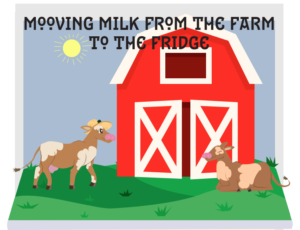
- Targeted towards students ages 5-7. In this program, students follow Clover the Cow’s growth from calf to dairy cow. Along the way, they learn about the dairy industry and how dairy foods can contribute to a healthy diet.
Grade Level Specific Programs
Kindergarten
- Be a Bone Builder
- A 30 minute lesson that teaches children about calcium and the
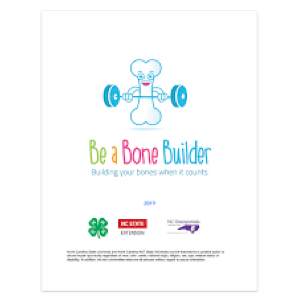 importance of including calcium rich food in their diet using My Plate, the importance of engaging in daily physical activity, and how to safely get enough Vitamin D
importance of including calcium rich food in their diet using My Plate, the importance of engaging in daily physical activity, and how to safely get enough Vitamin D
- Standard: K.NPA.1 Understand MyPlate as a tool for selecting nutritious foods
- A 30 minute lesson that teaches children about calcium and the
- Color Me Healthy
- A nutrition and physical activity program designed to stimulate all of the senses of young children: touch, taste, smell, sight, sounds, and of course, taste. It uses color, music, and exploration of the senses to teach children that healthy eating and physical activity are fun.
First Grade
- Busy World of Bees
- Learn about the benefits that bees and other pollinators provide to humans. Children will explore the survival needs of bees, bee life cycle and development and the diversity and differences of bee species. Youth will build a realization that pollinators need our help and we need them! Lessons focus on experiential, hands-on learning.
- Standard: 1.L.1. Understand characteristics of various environments and behaviors of humans that enable plants and animals to survive
- Standard: 1.L.2. Summarize the needs of living organisms for energy and growth
- Learn about the benefits that bees and other pollinators provide to humans. Children will explore the survival needs of bees, bee life cycle and development and the diversity and differences of bee species. Youth will build a realization that pollinators need our help and we need them! Lessons focus on experiential, hands-on learning.
Second Grade
- Embryology:
- Children have a natural curiosity about living things in the world around
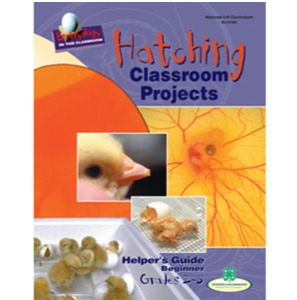 them. Building on this curiosity, students can develop an understanding of biology through direct experiences with living things, their life cycles and their habitats. This program also focuses on helping students develop life skills through experiential, hands-on activities.
them. Building on this curiosity, students can develop an understanding of biology through direct experiences with living things, their life cycles and their habitats. This program also focuses on helping students develop life skills through experiential, hands-on activities.
- Standard: 2.L.1. Understand animal life cycles
- Children have a natural curiosity about living things in the world around
- Bug Out!
- A series of insect-based activities which focuses on increasing understanding and appreciation of insects and to reduce fear of insects. Each lesson focuses on experiential, hands-on learning. Students learn about the life cycles of different insects, along with observing insect behavior, growth and development.
- Standard: 2.L.1 Understand animal life cycles
- A series of insect-based activities which focuses on increasing understanding and appreciation of insects and to reduce fear of insects. Each lesson focuses on experiential, hands-on learning. Students learn about the life cycles of different insects, along with observing insect behavior, growth and development.
Third Grade
- Soil Solutions:
- A series of hands-on science lessons that utilize the local school
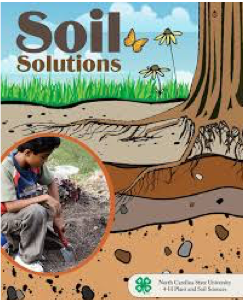 landscape to connect students to the world of soils and plants. Students will learn about soil and water relationships, soil and plant growth,seed germination, pollinators and their importance, soil nutrients and composting through experiential, hands-on activities.
landscape to connect students to the world of soils and plants. Students will learn about soil and water relationships, soil and plant growth,seed germination, pollinators and their importance, soil nutrients and composting through experiential, hands-on activities.
- Standard: 3.L.2. Understand how plants survive in their environments
- A series of hands-on science lessons that utilize the local school
- Fire Safety:
- We would like for all 3rd grade students in the county to participate in this program!
- Co-taught by 4-H and local Firefighters, this program teaches students about fire prevention, fire hazards, fire extinguishers, wildfire prevention and more. Students will also get to meet local firefighters and tour a fire truck.
- This program is typically taught during the first two weeks of October, to align with Fire Prevention Week.
Fourth Grade
- First Aid
- Can be completed at any time throughout the school year
- A series of lessons co-taught by the 4-H Agent, and local EMS.
- Each student will receive a First Aid Workbook which they will work through during the lessons, along with interactive and engaging activities.
- This lesson series can be presented virtually or in-person depending upon requirements and teacher needs.
- Hive Helpers
- Through hands-on and engaging activities, students will explore habitat differences, diversity, survival needs and the importance of native bees and other pollinators and the human impact on pollinators.
- Standard: 4.L.1. Understand the effects of environmental changes, adaptations and behaviors that enable animals (including humans) to survive in changing habitats
- Magic of Electricity
- Have you ever wondered why just some of the lights go out, why
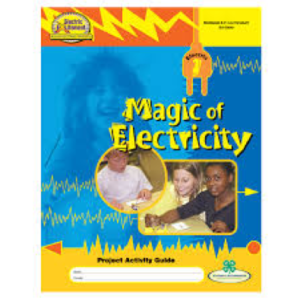 certain things insulate us from electricity better than others, or the effect of magnetism on various substances? Electricity is everywhere. Through this series of lessons, learn all about electricity through experiential, hands-on activities.
certain things insulate us from electricity better than others, or the effect of magnetism on various substances? Electricity is everywhere. Through this series of lessons, learn all about electricity through experiential, hands-on activities.
- Standard: 4.P.3. Recognize that energy takes various forms that may be grouped based on their interaction with matter
- Have you ever wondered why just some of the lights go out, why
- Through hands-on and engaging activities, students will explore habitat differences, diversity, survival needs and the importance of native bees and other pollinators and the human impact on pollinators.
Fifth Grade
- Eco-Wonders
- Have you ever wondered how clean is the air you breathe? How can you turn your waste into something valuable? How does the food you eat and the clothes you wear affect the environment? Eco-Wonders will help you answer some of these questions and many ore, learning about how the environment works and real-world issues trough hands-on investigations and explorations.
- Standard: 5.L.2. Understand the interdependence of plants and animals with their ecosystem
- Have you ever wondered how clean is the air you breathe? How can you turn your waste into something valuable? How does the food you eat and the clothes you wear affect the environment? Eco-Wonders will help you answer some of these questions and many ore, learning about how the environment works and real-world issues trough hands-on investigations and explorations.
- Vermicomposting
- Students will explore the life of an earthworm through a micro-
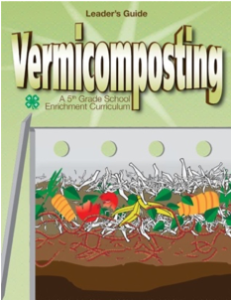 community that contains producers, consumers and decomposers.
community that contains producers, consumers and decomposers. - Students will also learn how to identify ways to reduce the amount of waste in their lives to support a sustainable environment!
- Standard: 5.L.2. Understand the interdependence of plants and animals with their ecosystem
- Students will explore the life of an earthworm through a micro-
- Owl Encounters
- Students will learn about the predatory adaptations, eating habits, characteristics and behavior of owls through participating in an experiential learning activity dissecting owl pellets.
- 5.L.2. Understand the interdependence of plants and animals with their ecosystem.
- Students will learn about the predatory adaptations, eating habits, characteristics and behavior of owls through participating in an experiential learning activity dissecting owl pellets.
- I Am An Ecosystem
- In this curriculum, students will confront some of the myths and facts surrounding microbes in general and Salmonella in particular. Students will examine where microbes grow in the environment and under what conditions. They will investigate the roles that microbes play in a healthy ecosystem as well as the roles that microbes play in our own bodies through a series of hands-on, experiential lessons.
- Standard: 5.L.1. Understand how structures and systems of organisms (to include the human body) perform functions necessary for life
- Standard: 5.L.2. Understand the interdependence of plants and animals with their ecosystem
- In this curriculum, students will confront some of the myths and facts surrounding microbes in general and Salmonella in particular. Students will examine where microbes grow in the environment and under what conditions. They will investigate the roles that microbes play in a healthy ecosystem as well as the roles that microbes play in our own bodies through a series of hands-on, experiential lessons.
Middle School
Programs for All Grades (6-8)
Teen Cuisine
Teaching teens to cook and choose heathier foods empowers them to make behavior changes that persist into adulthood. Lessons are designed for youth grades 6-12 and use a learner-centered approach, encouraging students to adopt healthy behaviors. Each of the six lessons includes a nutrition, food safety, food preparation, and physical activity component. Kitchen facilities are not required for these lessons, activities can be completed in the classroom.
Grade Level Specific Programs
Sixth Grade
- Owl Encounters
- Students will learn about the predatory adaptations, eating habits, characteristics and behavior of owls through participating in an experiential learning activity dissecting owl pellets.
- 6.L.2. Understand the flow of energy through ecosystems and the responses of populations to the biotic and abiotic factors in their environment.
- Students will learn about the predatory adaptations, eating habits, characteristics and behavior of owls through participating in an experiential learning activity dissecting owl pellets.
- Nutrition & Physical Activity
- Standard: 6.PCH.3 Analyze measures necessary to protect the environment
- Standard: 6.NPA.1 Analyze tools such as dietary guidelines and nutrition facts label as they relate to the planning of healthy nutrition and fitness
- Standard: 6.NPA.2 Create strategies to consume a variety of nutrient-dense foods and beverages and to consume less nutrient-dense foods in moderation
- Standard: 6.NPA.3 Apply lifelong nutrition and health-related fitness concepts to enhance quality of life
Seventh Grade
- Microbes On My Mind
- As you are reading this you have already come in contact with millions of microbes. In this curriculum, students will discover the role microbes play in our bodies, our ecosystem, and out food. These lessons are designed to encourage curiosity which will allow students to develop an understanding of the relationship between food safety, microbiology, and diseases, as well as the careers associated with microbiology.
- 7.L.1. Understand the processes, structures, and function of living organisms that enable them to survive, reproduce and carry out the basic functions of life
- As you are reading this you have already come in contact with millions of microbes. In this curriculum, students will discover the role microbes play in our bodies, our ecosystem, and out food. These lessons are designed to encourage curiosity which will allow students to develop an understanding of the relationship between food safety, microbiology, and diseases, as well as the careers associated with microbiology.
- Nutrition & Physical Activity
- Standard: 7.NPA.1 Apply tools (MyPlate, Nutrition Facts Label) to plan healthy nutrition and fitness
- Standard: 7.NPA.2 Create strategies to consume a variety of nutrient-dense foods and beverages and to consume less nutrient-dense foods in moderation
- Standard: 7.NPA.4 Apply lifelong nutrition and health-related fitness concepts to enhance quality of life
Eighth Grade
- Hydrosphere
- Take an in-depth exploration into the hydrosphere, including: water chemistry, watersheds, riparian zones, bioindicators, geomorphology, restoration & stewardship through hands on experiments and activities.
- Standard: 8.E.1. Understand the hydrosphere and the impact of humans on local systems and the effects of the hydrosphere on humans
- Take an in-depth exploration into the hydrosphere, including: water chemistry, watersheds, riparian zones, bioindicators, geomorphology, restoration & stewardship through hands on experiments and activities.
- Kitchen Chemistry
- Explore properties of matter, find out about acids and bases, and discover how everyday items and kitchen ingredients can be used in cool science experiments!
- Standard: 8.P.1. Understand the properties of matter and changes that occur when matter interacts in an open and closed container
- Explore properties of matter, find out about acids and bases, and discover how everyday items and kitchen ingredients can be used in cool science experiments!
- Nutrition & Physical Activity
- Standard: 8.PCH.3 Analyze measures necessary to protect the environment
- Standard: 8.NPA.1 Apply tools (Body Mass Index) to plan healthy nutrition and fitness
- Standard: 8.NPA.2 Create strategies to consume a variety of nutrient-dense foods and beverages and to consume less nutrient-dense foods in moderation
- Standard: 8.NPA.4 Analyze plans for lifelong nutrition and health-related fitness to enhance quality of life
High School (9-12)
CTE: Agriculture & Natural Resources
- Soil to Seed
- From the food we eat, to the water we drink, to the places where we live
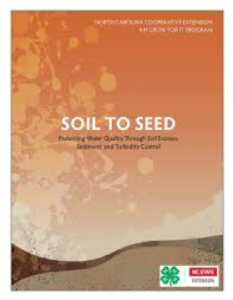 and play, soil erosion and sedimentation profoundly affects our everyday lives. Students will explore the principles of erosion and sediment control through hands-on, experiential learning activities.
and play, soil erosion and sedimentation profoundly affects our everyday lives. Students will explore the principles of erosion and sediment control through hands-on, experiential learning activities.
- From the food we eat, to the water we drink, to the places where we live
Biology
- Microbes: The World Within
- The unseen world of bacteria, the microscopic kingdom of life, has an enormous impact on our everyday lives. Students explore the distinguishing characteristics of bacteria commonly found in association with humans, investigate microbiomes and mechanisms by which the human body keeps any harmful invaders at bay and explore the importance of public health organizations and surveillance. Students participate in experiential learning and gain experience with several essential lab techniques.
- From Natural Selection to Classification
- Explore the process of natural selection and its impact on species over time, then explore the process of classification through hands-on, experiential learning activities.
- 3.4. Explain the theory of evolution by natural selection as a mechanism for how species change over time
- 3.5. Analyze how classification systems are developed upon speciation
- Explore the process of natural selection and its impact on species over time, then explore the process of classification through hands-on, experiential learning activities.
Earth & Environmental Science
- Soil to Seed
- From the food we eat, to the water we drink, to the places where we live and play, soil erosion and sedimentation profoundly affects our everyday lives. Students will explore the principles of erosion and sediment control through hands-on, experiential learning activities.
- 2.1 Explain how processes and forces affect the lithosphere
- 2.2 Understand how human influences impact the lithosphere
- 2.8 Evaluate human behaviors in terms of how likely they are to ensure the ability to live sustainably on Earth
- From the food we eat, to the water we drink, to the places where we live and play, soil erosion and sedimentation profoundly affects our everyday lives. Students will explore the principles of erosion and sediment control through hands-on, experiential learning activities.





